How To Draw Hands By zephy.fr
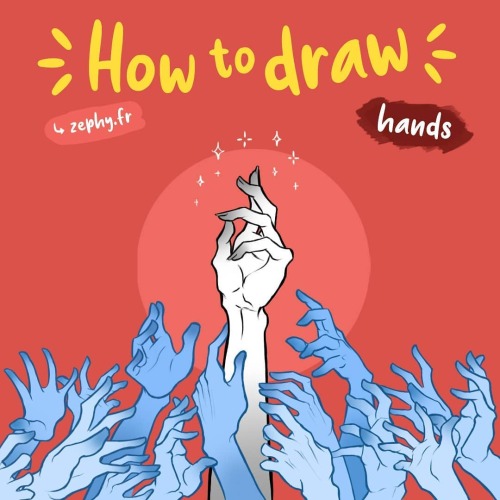
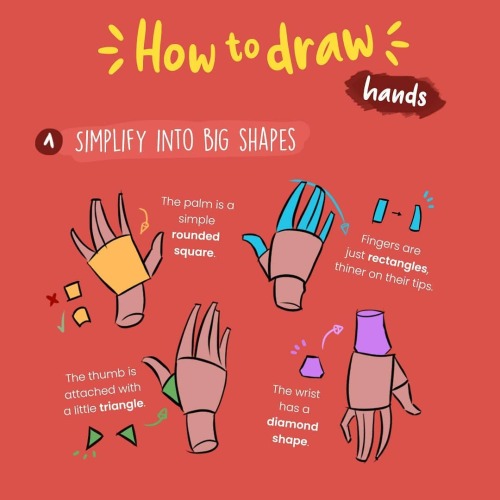
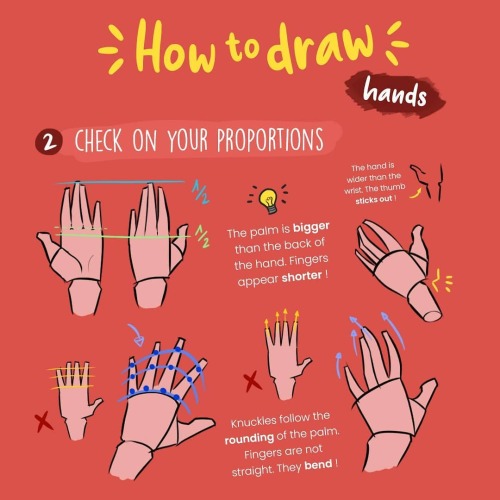
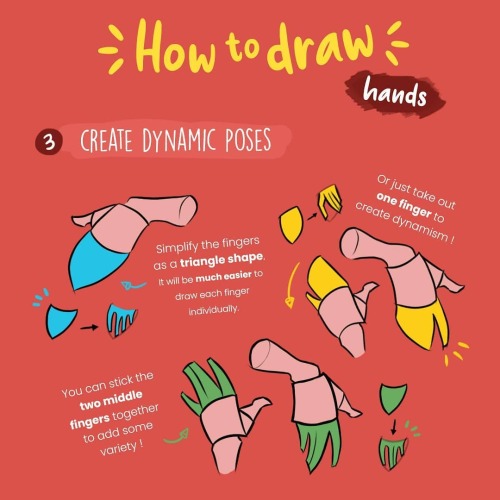

How to Draw Hands by zephy.fr
Support the artist and follow them on instagram!
More Posts from Nastysynth and Others

Do you have any advice for maintaining a celebrity's likeness in a drawing without compromising your art style? When I try to draw real people they look completely different from how they should be and my art style ends up totally skewed as well. Thanks in advance!
This is a tough skill to develop! but with some hard work and research you’ll be able to do it!!!
My recommendation is to study professional caricature! Even if the end goal isn’t to do exaggerated crazy portraits of the the celebrity, studying the art form can help you learn to apply those concepts more subtly in your own style!
The key element of caricature is studying a persons face and looking for what makes them unique or different from the ‘standard’ anatomical face model, eg how do their proportions stray away form the ‘rules’.
once you take note of these things experiment by exaggerating them in different ways through quick thumbnail sketches

thumbnails by Court Jones for Proko.com
They might not look like the person right away but keep experimenting! trial and error is your friend!!!
(for more info on Caricature the Proko youtube channel has a whole in depth series by Court Jones the artist above! I Highly recommend checking it out and the other lecture series the channel!)
Once you have done this research you can apply it to your style and design the celebrity just like the design team on Netflix’s BoJack Horseman designed Character actress Margo Martindale! She and many other celebrity cameo’s on the show look like themselves but also like they belong in the world of the show!

The final thought I want to leave you with is: don’t worry too much about art style or let it get in the way of learning new ways to draw. There is a lot of pressure on the internet to find your own unique art style and have everything be consistent all the time but this thinking can actually get in the way of your artistic growth if you focus on it too much or to early.
I Personally dont care about consistency at all in my art, I design the style of the drawing based on the project (eg. am I going to animate this character, is it an illustration, what age group am I targeting? what Genre? if you want to see examples of this I have plenty on my instagram)
I have a lot of feelings on the topic of art styles but I dont want this post to be essay length or take me a week to write so please watch this video by Kesh on youtube about it : Stop Trying to Find Your Art Style He talks about this issue way more clearly and concisely then I ever could!
Hope this Helps!!!
-Mod Todd (ko-fi)
About Yarovit-Yarilo

Today I present you my translation of fragments of two polish academic publications that are great favorites of mine. Fragments chosen are centered around Yarovit and Yarilo. My own comments will be indicated by a „trans. note” disclaimer. The fragments below are merely a part of larger text. I apologize for any context lost to the lack of broader perspective on the whole of the publication.
Mitologia Słowian by Aleksander Gieysztor
Chapter V: Principal deities and myths
Subchapter: „Perun’s many ways - Sventovit, Ruyevit & company, Yarovit-Yarilo”
Yarovit-Yarilo
A deity called Yarovit (trans. note: Herovith, Gerovit, pl: Jarowit) was worshipped in two locations settled by polabian Slavs - in pomeranian Wolgast and in Havelberg, a gord inhabited by the Brizans tribe (pl: Brzeżanie). During the mission of bambergian bishop Otton in Wolgost in 1128 one of his priests hid from an angry crowd in a pagan temple, and there found a giant shield covered in golden plates, that was considered untouchable and would only be carried out during war time, as a blessing of good luck. The preacher snatched the sacred shield and ran back out of the temple terrifying the pursuing crowd - in the sput of the moment they thought they see Yarovit himself. One of the writers compares him to Mars, another calls him the god of war - there is no doubt Yarovit was a martial god. It’s hard to tell if there was any statue in his temple, as the escaping priest only noticed the shield. A shield is a ritual object in many martial cults, for example in roman Regia (trans. note: royal house on the ancient Forum Romanum) a most sacred shield was watched over by guards. So called „Stone of Yarovit” in St. Peter’s church of Wolgast (trans. note: Wolgast is now located in the northeast corner of Germany) is a tombstone dating to the earliest christian times. One of the polabian villagers saw Yarovit appear to him „in the robes of his idol” to warn him about the coming missionaries - so there seems to have existed some idol/statue of him (trans. note: episode from Vita s. Ottonis III by Ebonis).
There are no doubts as to the origin of this deity’s name. It came from the root jar-, jaro- meaning strength or severity, but also conveying the idea of stregth coming from youth, as in slavic word „jar” meaning spring. Similar military competences and analogical anatomy of the names strongly connect Yarovit and Sventovit (pl: Świętowit) with one another and with Perun - the supreme warrior god. We could try to follow Ivanov and Toporov (trans. note: famous russian folklorists) in their attempts to strengthen this thesis by means of analysing folklore and comparative religious studies. The baseline for all scholars here is belarusian text from 1846 describing Yarilo as a young man in white robes, barefoot, with human head under his right arm and stalks of rye in his left hand, in a herbal wreath, on a white horse. A ritual, which took place on 27th of April, to welcome spring before the first plowing, was performed by a procession of young girls, one of them dressed as Jarilo, sitting on a white horse, the others singing to her
„Yarilo wandered all over the world / Rye grew high in the fields, he gave women children / And where he set his foot/ There a stack of rye / Where he’s in the grain/ There the stalks grow tall”
Along Yarovit and Yarilo there is also a third name entangled in the cult practices, „Yarun” (pl: Jarun), a ruthenian idol named in Laurentian Codex, as well as a collection of common slavic words, ruthenian „jarovoj” - „of spring” „vernal”; polish word „jare” used to describe grains planted in the spring (trans. note: as opposed to „ozime” grains growing over the winter), ruthenian and czech word for spring „jar”.
As much as we can question the date and quality of this belarusian text it’s undeniable that there is an archaic note ringing in those beliefs - white robes and white horse, flowers and rye stalks, the head held by a victorious rider, the barefoot man, touching the earth with his feet in a cultically significant way, making grain sprout wherever he steps, opening the fields in the spring, with his name, the surveying of the fields. He has been accepted, his traits amalgamated with those of St. George (Sveti Jurij) who is celebrated in some places on 23rd of April (trans. note: julian, not gregorian), accompanied by burning of female effigy called Marena/Marzanna, personifying winter or death, a harbinger of spring. Sometimes young Yarilo is juxtaposed with the old Yarilo, who gives up his place - perhaps loses it in a fight with his young rival.
We can see a bit of a duality shaping up in the image of Yarovit-Yarilo-Yaruna. On one hand he is a warrior, on another an overseer of agricultural activity, which, despite Ivanovs and Toporov’s opinions, doesn’t take any odd naturalistic interpretations on the part of the people as it naturally belongs to the dominion of supreme deities - even Jupiter comes down to bless the roman farmer during his spring festival Vinalii, that falls on… 23rd April.
We also need to examine the toponimastic evidence: the city of Jarilovo and no less than four settlements called Jarilovic in the area od Novogrod the Great. In 18th century diocese of Voronezh festivities were held around an idol called Yarilo from Wednesday to Friday or Saturday in the week after Green Week, as late as 1673 a man would lead the festival, adorned with flowers and bells, with his face painted red and white.
Religia Słowian by Andrzej Szyjewski
Chapter V: The Lost Gods
Subchapter: „Deities of fertility and vegetation”, fragments
We can see the solar hero association even more prominently in Yarovit, worshipped in Wolgast and Havelberg. His very name „Yarovit”, „The Young Victor” is connected to spring, youthful strenght and sexual passion (as in slavic words „jar” - spring, „jurny” - virile, manly, or the phrase „stary ale jary” meaning something along the lines of „old but tough”). This particular god watched over the fertility of fields and forests, humans and beasts - or so we can guess from the threats of Yarovit’s priest made against all those who will choose the „german god” (trans. note: abrahamic god) over their local deity. In Wolgast a sacred golden shield of Jarowit was held described as „great of size and exquisitely made”, a clear solar symbol, that nobody but the god or his priest could touch. As the greatest sanctity in the temple to the polabians it was also a symbol of victory - let’s not forget that Otto of Bamberg describes Yarovit as a war god similar to Mars. As the greatest, untouchable sacred object, and at the same time the harbinger of victory it corresponds fully in its symbolism to the white horse of Sventovit. In the „Vita s. Ottonis” we find a clear reference to Yarovit as the god of military, his name is translated into latin as „Mars” („deo suo Gerovito, qui lingua Latina Mars dictur). Just like with Sventovit we see a trio of interconnected associations: fertility - solar hero - war.
The celebrations of Yarilo mentioned by the missionaries of Otto were likely the planting festival of 15th April. It could involve the god’s „descent” among the people, enacted with the help of the sacred shield. That the god spoke through the lips of żerca (slavic priest) we know from other versions of „Vita s. Ottonis” (trans. note: hagiographic writings about Saint Otto). Scholars try to reconstruct the pre-christian celebrations through XVIII century ethnographic materials concerning Yarilo (admittedly not Yarovit), with ruthenian and belarusian origins. Texts recovered from diocese of Voronezh mention local bishop putting an end to the festivities surrounding Yarilo held on 23rd April in julian calendar (15th of April corresponds in gregorian). In christian context Yarilo is replaced by Saint Jurij (description of the same ritual as one described above follows, girl dressed up as Yarilo, the same song). People would dance circle dances (korovod) on top of the freshly planted fields and end the day with a feast with orgiastic elements. The purpose of the rituals was to close the winter and open the spring; Yarilo opens the gates of earth, letting the spring out.
Yarilo’s attributes clearly point to his role as god of vegetation and fertility. The girl assuming his likeness during the festival, also known as Wiosnołka or Wiesnowka (trans. notes: pronounciation „vyos-NOHW-kah” or „vyes-NOHV-kah”) could be an echo of „divine bride”, an offering to the god, an incentive to arrive with the spring. Many songs refer to Yarilo causing the earth to sprout and bloom as he walks but also summoning dancing girls to him. Circle dances, white robes, white horse and the cut off head are all elements of solar symbolism. The head belongs to Old Yarilo, dethorned and overpowered by his young son. All over the world similar symbols exist - from celtic Curoi to mayan Hunahpu. Young Yarilo matures and dies as the harvest unfolds, then at the end of summer a funeral is held - this time main roles were played by young married women not maidens. They made an effigy of Yarilo (putting some extra effort into shaping his reproductive organs) that they called Kostrub („COST-roob”) and then they put him into his grave, in the ground since in the earth the sun loses it’s powers and dies, letting the new sun take over. The people would sing and cry out about Yarilo dying and ask him to get back on his horse in his golden saddle. Attempts to reconstruct the rituals seem to show that young Jarilo on white horse was juxtaposed with old Yarilo on black goat. Southern slavs practice similar rituals of burning old Badniak (a piece of wood with forked roots) on Christmas Eve to make place for young Božič (son of god). Western Slavs don’t have a deity corresponding to Yarilo - they close the winter in rituals involving Marena/Marzanna, followed by a procession carrying around „maik” or „nowe lato” symbolized by the peak of an evergreen coniferous tree or a rooster as a solar bird.
The Slavs were an agricultural society so agrarian deities were their primary source of relations with divine, cosmic forces. There is a certain myth/archetype that is characteristic for early farmers, the myth of creative murder, in which the first birth, growth and harvest are prompted by the first death - death of a deity, hero, ancestor, who dies sacrificing himself for the people, and from his body the first plants spring, allowing the people to survive. That myth, encated in many cultures in many ways leads to the cincept of a solar god that dies and is reborn cyclically, whose individual fate is reflected by the cycle of growing grain. The stalks loose their heads under the sickles for people to be able to feed. Yarilo (and maybe even Yarovit) makes identical sacrifice.
Art: Jaruna by Ada Konieczna















For the anon who asked me about tips on drawing faces, hope this helps!









@qlaude is so nice & wonderful and asked if i’d share some anatomy tips so how could i refuse!!! this is all stuff that’s still pretty new to me, so it’s really just an explanation of my current learning process. hope it all makes sense though!
I’ve been using your Arcana tutorials as a reference for a self-insert character. But I’m having trouble coloring the tulle bathrobe, the see-through cloth as well as it’s general texture. Any advice?
What luck. I literally just finished redrawing Isha’s bath sprite.
Note: I use Clip Studio Paint but this method works with any program that has layers and layer styles.
First off, some things I noticed when deconstructing how to draw them.

My Process:

Note about the bottom half: Despite being more opaque, there’s a slight gradient and transparency to it. This can be achieved by airbrushing a very light eraser on the edges of the base colour layer


As for the texture, you can use a worn paper texture on top of this colouring set to “overlay”

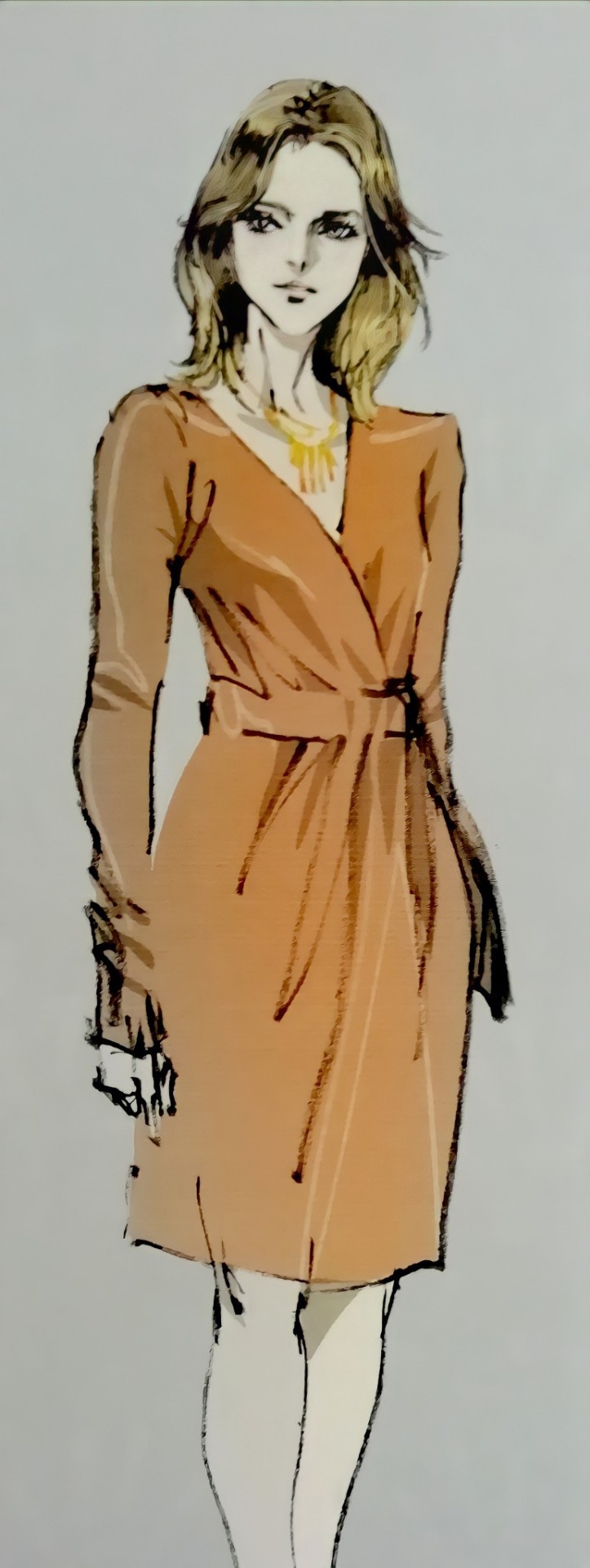


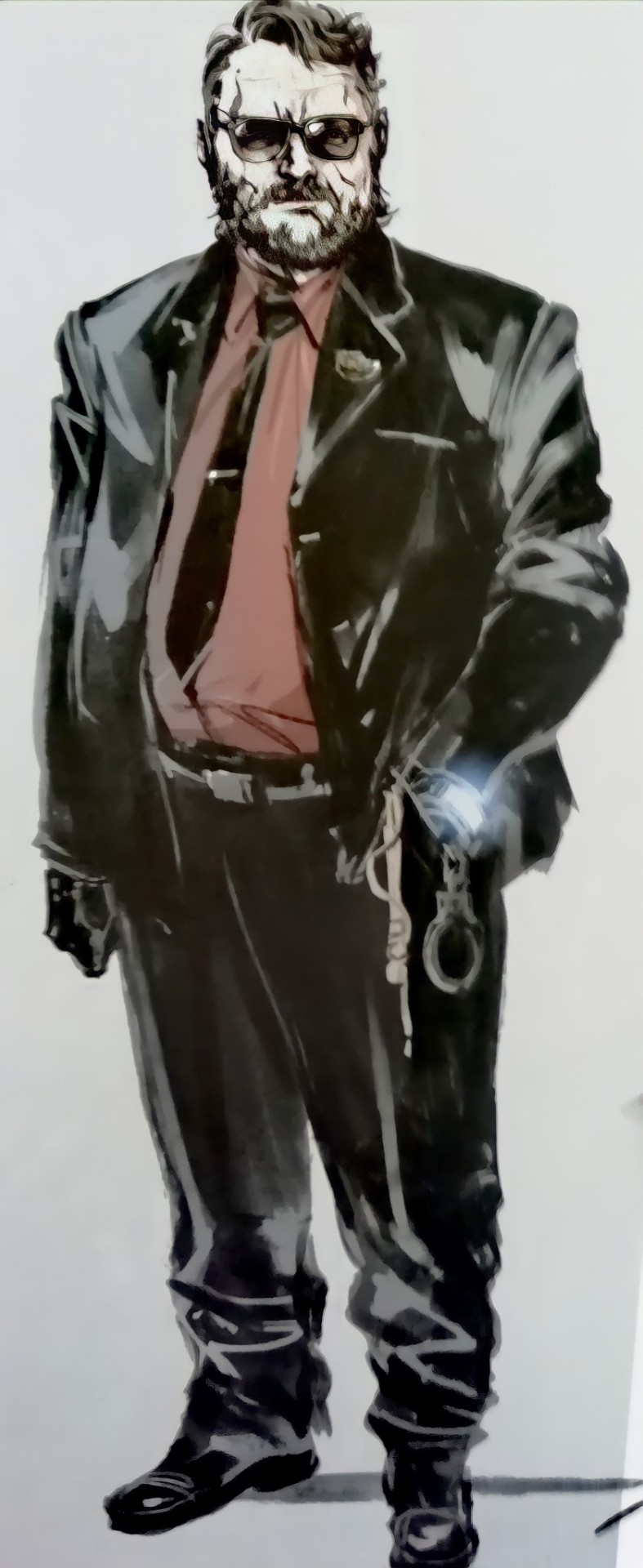
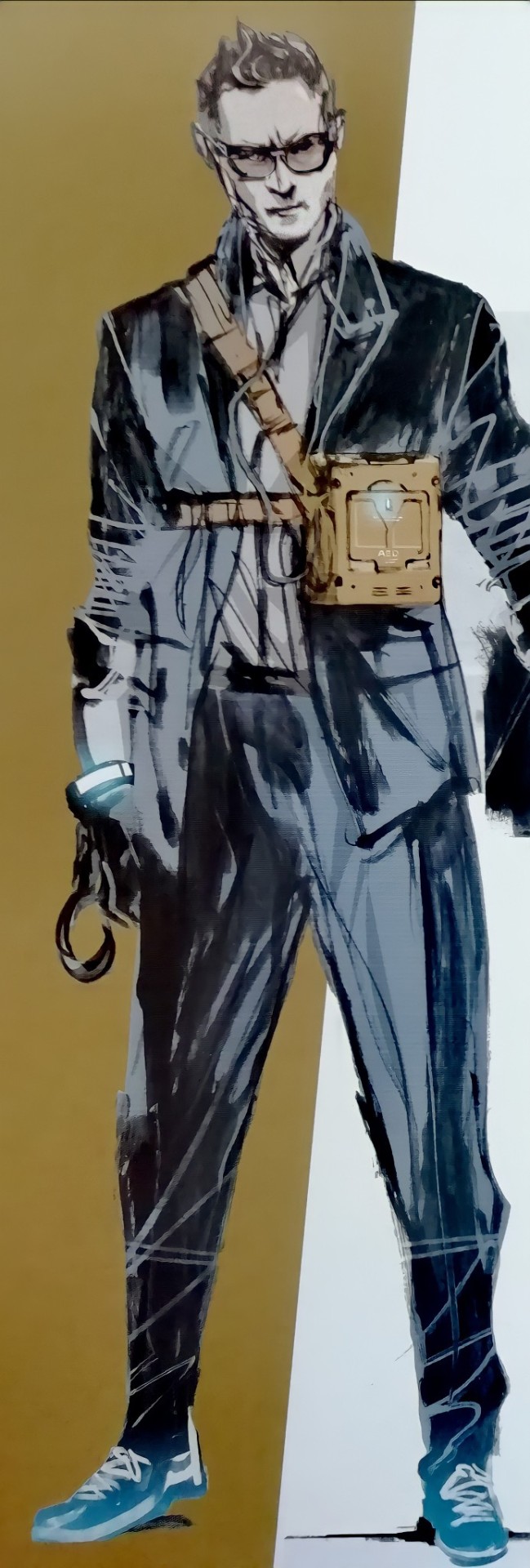

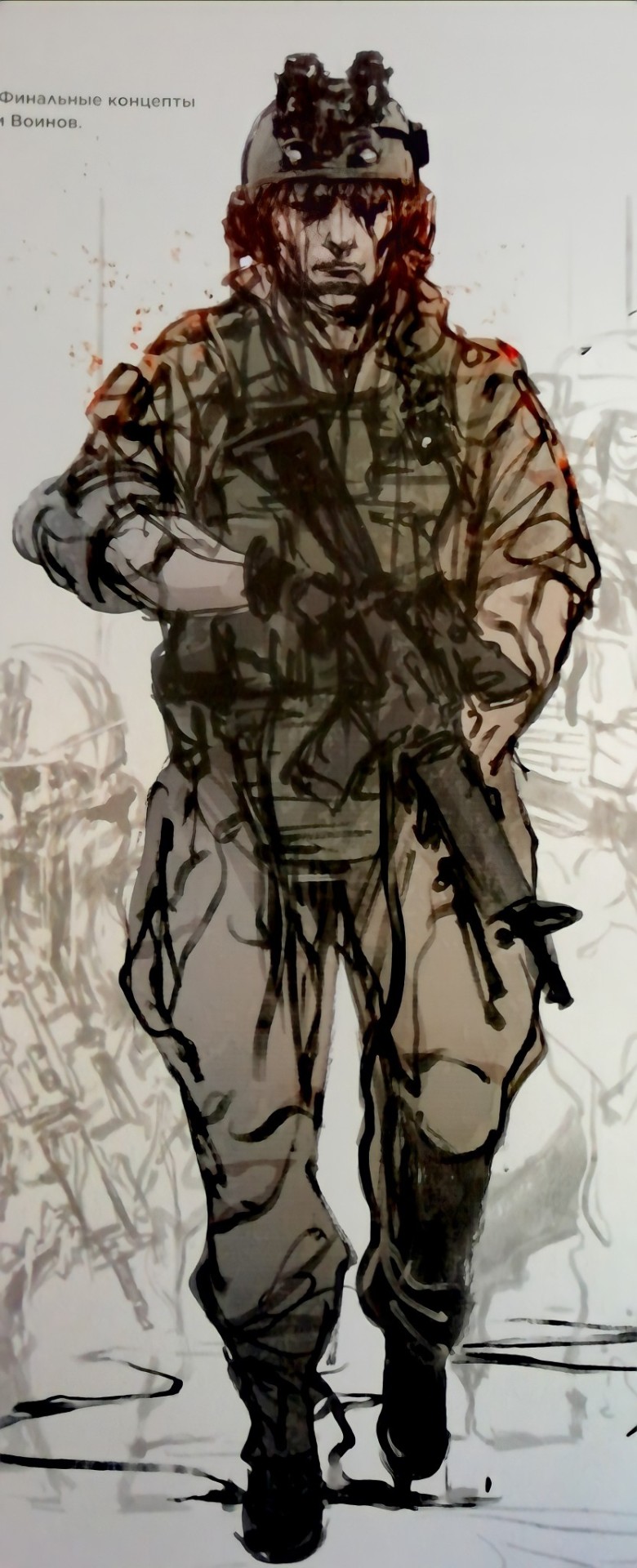
Art of DEATH STRANDING
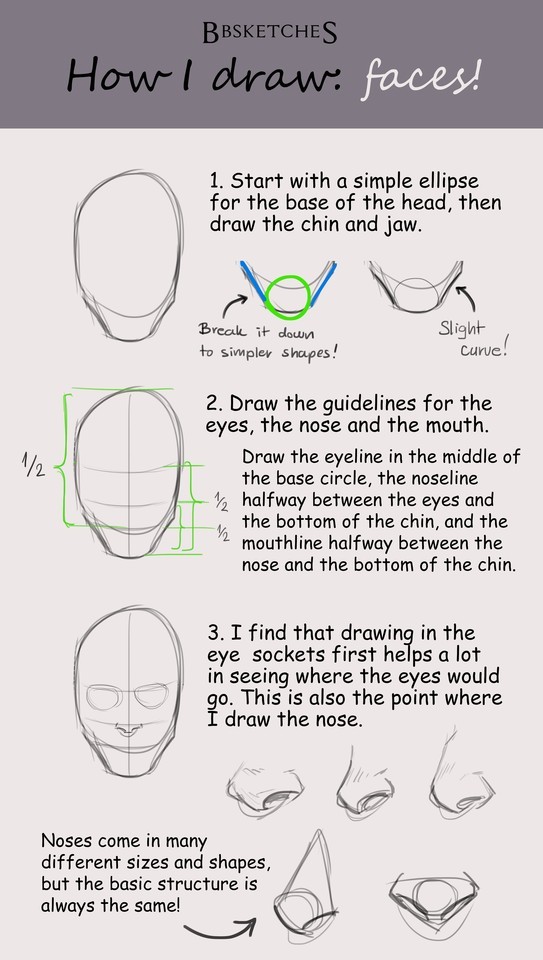

Face tutorial for Anon!
I wasn’t sure whether you meant heads or facial expressions, so here’s a very basic head tutorial! Of course not all faces are the same so proportions and the size of ears/eyes/noses etc. can vary! Feel free to explore and play with them to create unique and interesting characters! I hope this is somewhat helpful, and let me know if you’d like a tutorial on expressions as well!
-
 mr0scarlet42 liked this · 1 month ago
mr0scarlet42 liked this · 1 month ago -
 kaiji4ever liked this · 1 month ago
kaiji4ever liked this · 1 month ago -
 medic-cosplays liked this · 2 months ago
medic-cosplays liked this · 2 months ago -
 one-thirdhuman liked this · 2 months ago
one-thirdhuman liked this · 2 months ago -
 shlopnis liked this · 2 months ago
shlopnis liked this · 2 months ago -
 miolawlight liked this · 2 months ago
miolawlight liked this · 2 months ago -
 spicyartereferences reblogged this · 2 months ago
spicyartereferences reblogged this · 2 months ago -
 zoeypapalia-24 liked this · 2 months ago
zoeypapalia-24 liked this · 2 months ago -
 static-rain-009 liked this · 3 months ago
static-rain-009 liked this · 3 months ago -
 starcloudv16 liked this · 3 months ago
starcloudv16 liked this · 3 months ago -
 thomatobrisado liked this · 3 months ago
thomatobrisado liked this · 3 months ago -
 msjoanlovesarson liked this · 3 months ago
msjoanlovesarson liked this · 3 months ago -
 chsaja liked this · 3 months ago
chsaja liked this · 3 months ago -
 lulumitmumu liked this · 3 months ago
lulumitmumu liked this · 3 months ago -
 scoutz-silly liked this · 3 months ago
scoutz-silly liked this · 3 months ago -
 insomniacitry liked this · 3 months ago
insomniacitry liked this · 3 months ago -
 theapparatusissublime liked this · 3 months ago
theapparatusissublime liked this · 3 months ago -
 raccoons-in-a-dumpster liked this · 3 months ago
raccoons-in-a-dumpster liked this · 3 months ago -
 krabyxa reblogged this · 4 months ago
krabyxa reblogged this · 4 months ago -
 krabyxa liked this · 4 months ago
krabyxa liked this · 4 months ago -
 jessyii liked this · 5 months ago
jessyii liked this · 5 months ago -
 herloveforrice liked this · 5 months ago
herloveforrice liked this · 5 months ago -
 wolfieferret reblogged this · 5 months ago
wolfieferret reblogged this · 5 months ago -
 wolfieferret liked this · 5 months ago
wolfieferret liked this · 5 months ago -
 frozenlak liked this · 5 months ago
frozenlak liked this · 5 months ago -
 smulnsander liked this · 5 months ago
smulnsander liked this · 5 months ago -
 nikopie liked this · 5 months ago
nikopie liked this · 5 months ago -
 honestlyboringperson liked this · 6 months ago
honestlyboringperson liked this · 6 months ago -
 kirabasai liked this · 6 months ago
kirabasai liked this · 6 months ago -
 cherry-blossom-qf liked this · 6 months ago
cherry-blossom-qf liked this · 6 months ago -
 spankinspecter reblogged this · 6 months ago
spankinspecter reblogged this · 6 months ago -
 hourglassofficial reblogged this · 6 months ago
hourglassofficial reblogged this · 6 months ago -
 hourglassofficial liked this · 6 months ago
hourglassofficial liked this · 6 months ago -
 navvriskartrefs reblogged this · 6 months ago
navvriskartrefs reblogged this · 6 months ago -
 gaybugyaoi reblogged this · 7 months ago
gaybugyaoi reblogged this · 7 months ago -
 tamobomb001 liked this · 7 months ago
tamobomb001 liked this · 7 months ago -
 inkedquillz liked this · 7 months ago
inkedquillz liked this · 7 months ago -
 yeehawmosexual-gay-cowboy liked this · 7 months ago
yeehawmosexual-gay-cowboy liked this · 7 months ago -
 lanakatte liked this · 7 months ago
lanakatte liked this · 7 months ago -
 annita898ol6gmh liked this · 7 months ago
annita898ol6gmh liked this · 7 months ago -
 mirri-bloodmoon liked this · 7 months ago
mirri-bloodmoon liked this · 7 months ago -
 stardusts-glow liked this · 7 months ago
stardusts-glow liked this · 7 months ago -
 person-who-loves-startrektng liked this · 7 months ago
person-who-loves-startrektng liked this · 7 months ago -
 startr00per420 liked this · 7 months ago
startr00per420 liked this · 7 months ago -
 cleofast300 liked this · 7 months ago
cleofast300 liked this · 7 months ago -
 soptastic liked this · 7 months ago
soptastic liked this · 7 months ago -
 silverstrying reblogged this · 7 months ago
silverstrying reblogged this · 7 months ago

Sylwester | i will mostly post sketches, because i'm too lazy to end them
196 posts